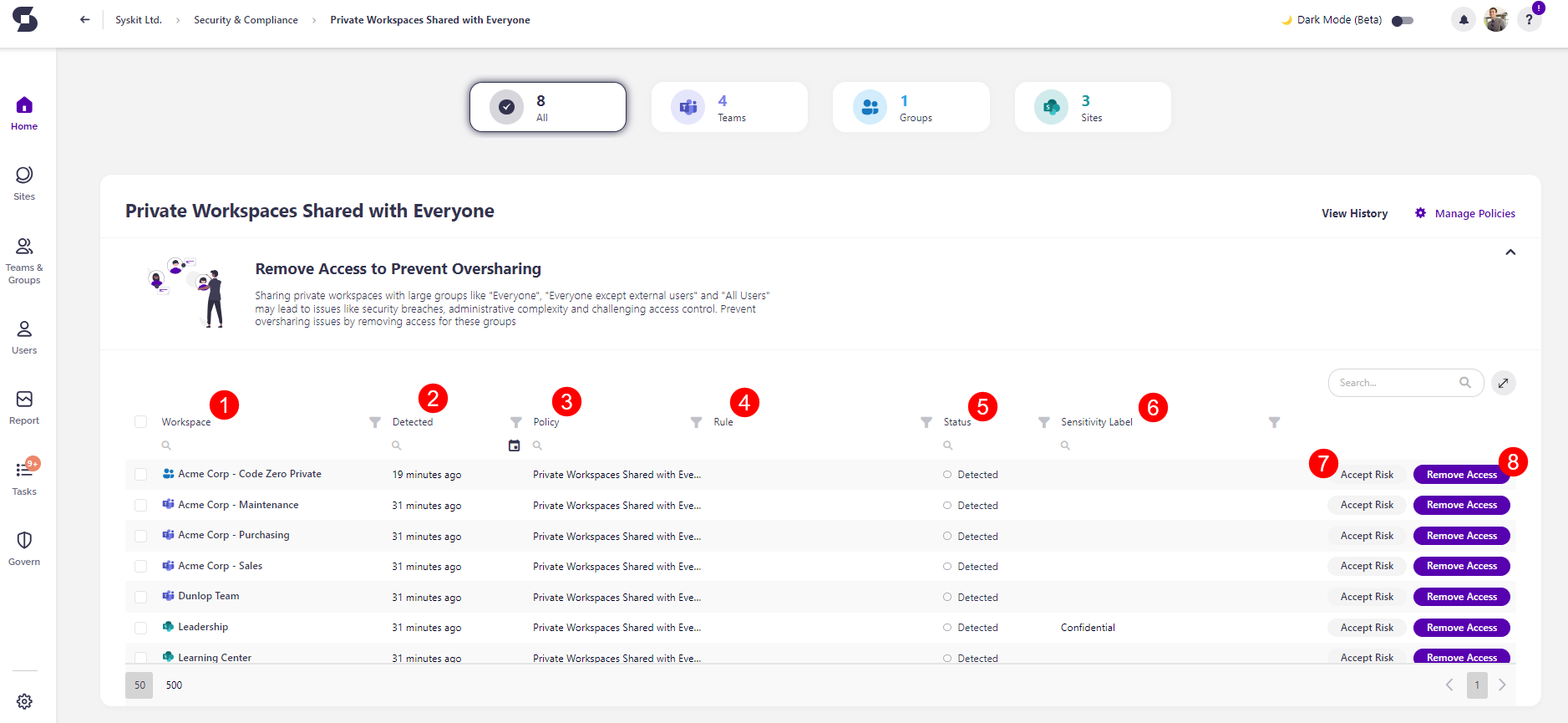Private Workspaces Shared with Everyone
Syskit Point detects private workspaces shared with Everyone, Everyone except external users, or All Users security groups based on the settings defined in the tenant-wide policy. This helps you ensure your private workspaces are secure and only the users who should have access to the workspace have it.
Oversharing workspaces might lead to security risks, administration difficulty, and a challenge managing access control.
The Private Workspaces Shared with Everyone is a tenant-wide policy and can be automated without task delegation. This means that Syskit Point detects a vulnerability in a workspace based on the applied policy, but it does not create tasks or send any emails to collaborators.
By default, the Private Workspaces Shared with Everyone policy is set to Resolve Manually, which means the vulnerability is flagged on the Security and Compliance Dashboard, where manual actions can be taken to resolve it.
If the policy is set to Resolve Automatically, Syskit Point automatically resolves the vulnerability by removing access granted to Everyone, Everyone except external users, and All users groups.
The purpose of this is to assist Syskit Point admins by bringing awareness of potential issues in their Microsoft 365 environment.
By default, the policy is applied to private Microsoft 365 Groups, Microsoft Teams, and Sites.
A vulnerability is detected when:
- Access is given to dynamic security groups - Everyone, Everyone except external users, and All Users - that contain a large number of users.
- A public workspace is changed to private, and a large number of users still have access through dynamic security groups: Everyone / Everyone except external users / All Users.
On the Security & Compliance dashboard, click the Private workspaces shared with everyone button to see the report.
The Private Workspaces Shared with Everyone screen opens, showing a list of all private workspaces with access given to a large number of users through the Everyone, Everyone except external users, or All Users security groups.
The report provides information on:
- Workspace (1) name
- Detected (2) - when the policy vulnerability was detected
- Policy (3) - the name of the policy
- Rule (4) - the name of the Rule if one was created to automatically apply the policy
- Status (5) - status of the policy vulnerability
- Sensitivity Label (6) - shows the sensitivity label if assigned
Additionally, you can complete the following actions for the policy vulnerability:
- Accept Risk (7) - clicking this closes the policy vulnerability without making any changes to the current state of the workspace
- You can select a time frame for how long the vulnerability should be ignored: 30 days, 90 days, 6 months, or 1 year.
- Remove Access (8) - clicking this removes access to the selected workspace(s) for Everyone, Everyone except external users, and All Users security group
